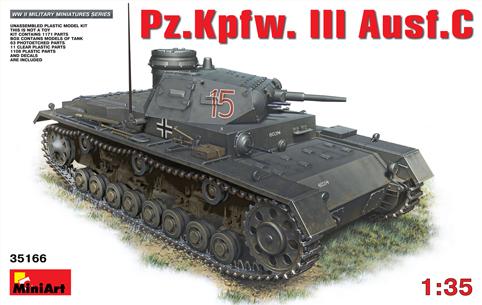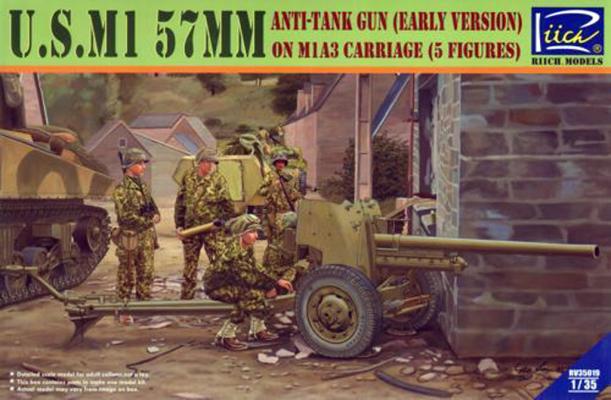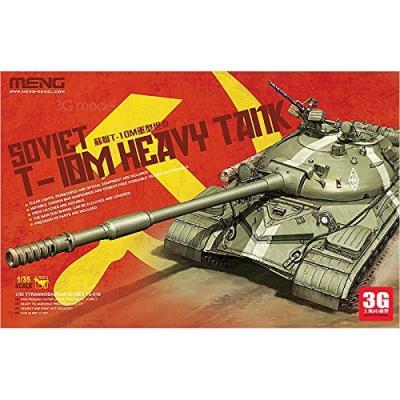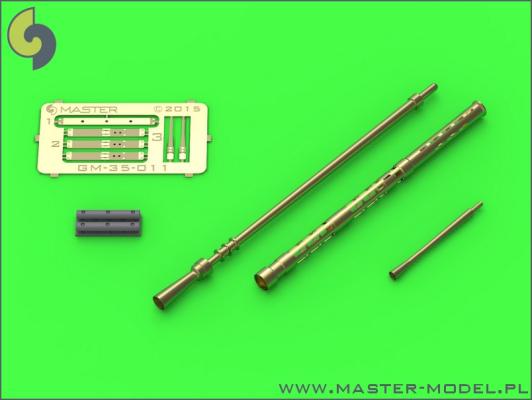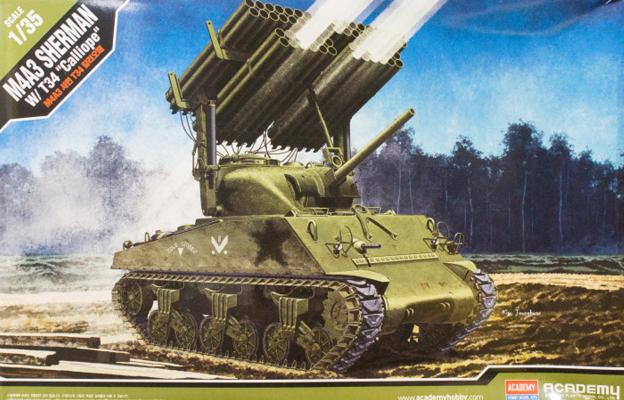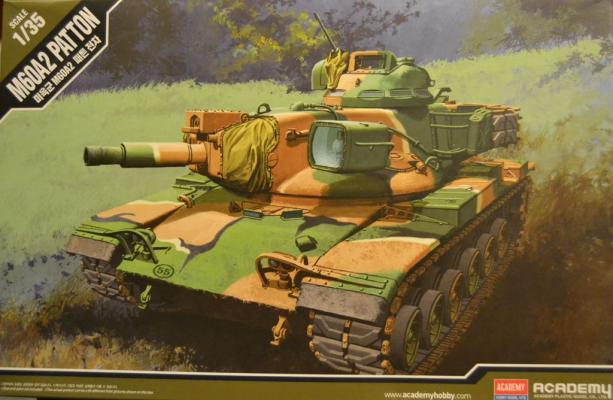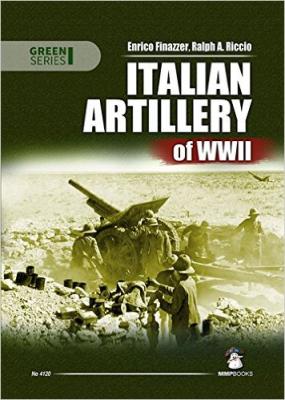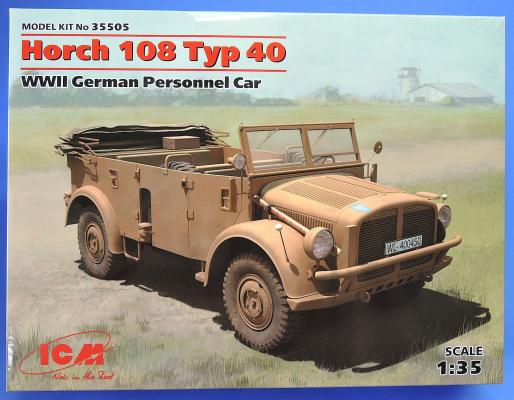The Panzer III was one of the two work horses of the German Wehrmacht , together with the Panzer IV, serving on all fronts during the Second World War. And while the modeler has been well provided for when it comes to the later models (Ausf. E onwards) of the Panzer III, the earlier versions have been sorely neglected. Until now: Miniart of Kiev, Ukraine has announced that they will be doing the Panzer III Ausf. B, C and D in 1/35th scale. If the Panzer III Ausf. C kit under discussion today is anything to go by; we are all in for a real treat.
History
The British 6 Pounder Anti-Tank gun was manufactured in the US, in 1942. In early 1943, the US Army adopted it for their use and called it the 57mm Anti-Tank gun M1. The version adopted for the army was modified and supplied to the army with a modified towing hitch and “Combat” wheels. Most branches of the US Army considered the weapon as too heavy and it was also hampered by the lack of ammunition. In 1943 only simple armor piercing ammo was manufactured. It wasn’t until late 1944 before adequate AP ammunition was made available. The M1 could penetrate 75mm of armor angled at 30 degrees at a distance of 3000 meters. In spite of the shortcomings, by early 1944 the M1 had become the standard towed anti-tank gun of the US Army Divisions. The prime mover for the M1 57mm was the Dodge WC-63 and the White halftrack. Over 10,000 M1’s were built for the US Army and 4,242 for the British Army. The M1 was also used by the Free French and Russian armies.
The T-10M can trace its history back to the late WWII JS-1/JS-2 heavy tanks. At the September, 1945 Berlin Victory Parade the new JS-3 made its first appearance with a “turtle shell” turret and a “pike nose” front hull that made a worrisome impression on western observers. To keep up with the western powers heavy tank development projects in late 40's, the Russians continually modified the JS tanks up thru JS-7, but done of these went into production. In late 1948, the General Tank Directorate issued an order to develop a new heavy tank that would surpass the performance of the JS-3, but weigh no more than 50 tons. The famous Russian tank designer Zhozef Kotin developed the new design, and prototypes were made in 1949. The military was supportive and the tank was named JS-8. Upgrades lasted a while, and the tank was renamed JS-9 and then JS-10. After Stalin's death in 1953 the JS-10 was renamed the T-10, and by the end of 1953 it went into production.
The development of this Russian heavy machine gun started in 1944 and by 1949 it had entered service as an infantry weapon. By the 60's it was withdrawn as it was too heavy to be useful. However, it was also mounted on tanks, BTR's, BRDM-2 and other armor vehicles, even boats. It has heavy fire power and a very long range of 2-3,000m and up to 2,000m vertically as an AA weapon. This version, KPVT (tankovyi) was modified from the infantry version by shortening the receiver, providing a heavier barrel jacket and using a 50-round belt instead of the original 40-round belt. To us Americans, if you convert the 14.5mm it turns out to be .57 caliber. More than half way between the .50 caliber M2 MG and the 20mm round. With the larger bullet and case it provided approximately twice the energy of the .50 caliber round, making it a very formidable weapon.
Summary
Academy apparently has teamed with Italeri to produce one of the first ‘Calliope Shermans’ to appear in some time. The M4A3 vehicle is produced by Academy, while the T-34 multiple rocket launcher looks like it is from Italeri, based on sprue shots of the rocket launcher parts. As with all of their AFV kits, Academy provides the builder with good value based on fewer parts without sacrificing a lot of detail.
This is indeed a one of a kind armored vehicle. I think that only a single prototype was ever built. After some successful tests of Grille artillery in the Italian Front a decision was made to test a Flak 37 on a heavily modified Panther chassis. I think it even reached the prototype stage.
When you open the box you will find more plastic than for the average model, as all the parts for the Flak 37 are provided by Dragon Models and the chassis, armored sides and running gear is provided by Bronco. There are over 60 sprues and two small photo-etch frets.
Instructions are very clear, probably CAD line drawings generated from the actual CAD design for the molds. The overall surface detail is outstanding, as the accompanying pictures show. Detail is not limited to the armored vehicle as you also get tarps, bags, helmets and rifles but not figures are provided.
Background
A variant of the M60 main battle tank featuring a low-profile turret, a 152mm main gun capable of firing conventional rounds, and the MGM-51 Shillelagh anti-tank missile system, the M60A2 was queued up as an interim solution while the MBT-70 was under development. Despite its advanced technology, the “Starship” did not live up to expectations and was eventually phased out of active duty units by 1981.
Italian Artillery in WW2 is a subject long neglected in the modeling field, although it’s good to see Italeri and other companies starting to create kits of these subjects. Italy’s artillery arm during that war suffered, to a certain degree, from their successes in the Great War, where they captured or otherwise obtained large numbers of artillery pieces from the defeated Austro-Hungarian Empire. This led to a certain complacency in the higher military echelons concerning further developments, so that Italy was always suffering from inadequate support in this field. That being said, when they did develop new materials they were consistently excellent with innovations such as easily replaceable inner barrels.
Eduard has produced this nice photoetch set to add considerable detail to ICM’s Horch 108 Typ 40 WWII German Personnel Car. The set adds much better detail to the light and equipment mounting brackets on the front fenders, the brackets and plaques on the rear doors, the rifle clamps, and many other miscellaneous details.
This is a new, very nice kit from ICM. The parts have very good detail, go together will, and end up with a highly detailed model. Care must be used due to small parts, so the kit may be difficult for beginners.
The kit comes with all the parts in one plastic bag. The five vinyl tires are separately bagged, as are the clear plastic sprue parts. The bulk of the kit is on six dark yellow sprues. The parts have extremely good detail and there are many finely cast pieces. There are lots of small pieces and the kit includes 211 parts overall. The front grill is particularly well cast with openings between the individual grill slats. There is no flash apparent on the parts and mold seams are minimal. The detail on the parts is incredible and this should make for a highly detailed model. The plastic is quite soft so care will need to be taken to avoid gouging the plastic when cleaning up the parts.

